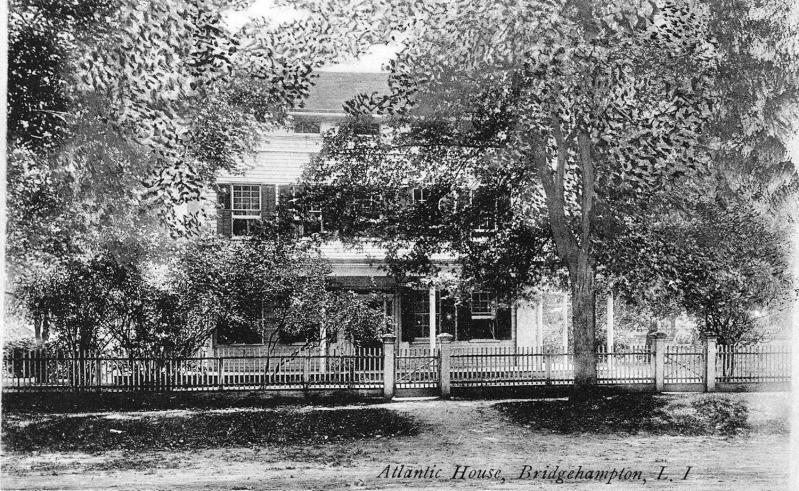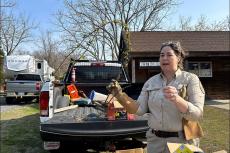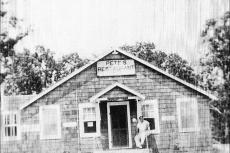Never let it be said that East Enders are bad at creative reuse. In almost every village or hamlet, you can find buildings that were built to be one thing, and through some twist of fate became something else entirely (say, a bank turned coffee shop). The Atlantic House, a once-popular boarding house and rectory, is an excellent example.
The postcard seen here, from the Elise Quimby Room at the Hampton Library in Bridgehampton, shows the Atlantic House surrounded by trees as seen from the street. The house had a storied history, and was thought to have been built in colonial times as a private residence. It would be moved from the site of what is now the Topping Rose House to a spot across the street and a bit west, where the St. Ann’s Episcopal Church rectory stands today.
There, owned and administered by John W. Hull (1824-1902), the Atlantic House was host to many a merrymaker and summer boarder, and the passing of its proprietor signaled, to some, the end of an era. Still, the Hull family continued to rent rooms to summer visitors until 1908, when what was then known as St. Ann’s Mission Church bought the property and converted it into a rectory on the second floor with a men’s club on the first.
This use continued until 1913, when Minnie Greene Deshler (1856-1919), the wife of one of St. Ann’s founding members, John Green Deshler (1852-1929), donated her daughter’s summer cottage in Sagaponack to the church for use as a permanent rectory. By 1915, the old Atlantic House had been dismantled to make room for the new cottage, and parts of it were moved to Southampton to be reused as building material.
The cottage that replaced it served as a thrift store and rectory until at least 2019, when it became a full-time rectory.
—
Julia Tyson is a librarian and archivist in the Long Island Collection.




